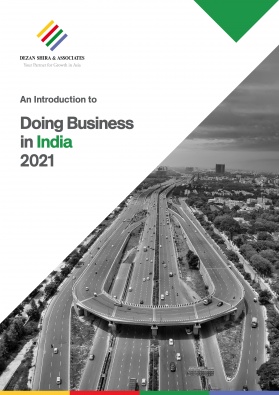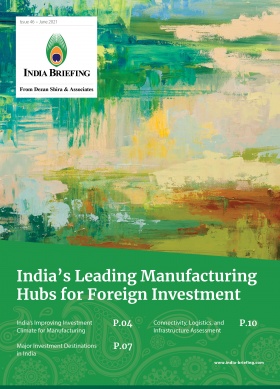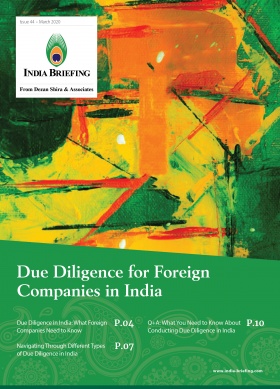What is PM Gati Shakti Yojana? India’s National Master Plan for Multimodal Connectivity to Economic Zones
PM Gati Shakti Yojana is a national master plan for the development of multi-modal connectivity to economic zones and boost last mile connectivity. It follows the National Infrastructure Pipeline and National Monetisation Pipeline, all of which cumulatively seek to transform Indian infrastructure and logistics connectivity.
On October 21, 2021, the Cabinet Committee on Economic Affairs (CCEA) approved the PM Gati Shakti Yojana, a INR 100 trillion (US$1.33 trillion) national master plan for the development of multi-modal connectivity to economic zones. Among other things, the plan aims to maximize inter-ministerial coordination and minimize decisions made in departmental silos.
This announcement follows two other major steps taken by the government towards advancing Indian infrastructure, namely, the National Infrastructure Pipeline and National Monetisation Pipeline.
How will the PM Gati Shakti National Master Plan be implemented?
The PM Gati Shakti National Master Plan includes an institutional framework that will integrate 16 ministries, including rail and roadways, aviation, agriculture, etc. together in a joint committee to implement and monitor INR 100 trillion worth of investment.
The master plan will: (i) use latest satellite imagery for visual understanding; (ii) facilitate coordination among all stakeholders; (iii) synchronize implementation of projects; (iv) offer planning tools for route planning; (v) facilitate land acquisition, permissions, and congestion reduction; and (vi) implement dashboard-based periodic monitoring for progress.
Establishment of economic zones
Apart from departmental coordination, the plan also focuses on the establishment of economic zones to boost ease of doing business in India. The economic zones are proposed in the following sectors:
- For promotion of industry and internal trade, 11 industrial corridors comprising 32 projects will be developed in four phases by 2024-25. Greenfield smart industrial cities are proposed to be created for sustainable, resilient, and quality infrastructure for industries.
- 90 textile clusters and mega textile parks will be developed by 2024-25. 10 mega integrated textile parks are proposed to have plug and play facilities and integrated value chain to boost scale and efficiency with two parks partly dedicated to machinery manufacturing.
- 109 pharmaceutical and medical device clusters will be developed by 2024-25. 10 pharmaceutical clusters to be developed by financing common facilities worth INR 200 million (US$2.67 million) each. Further, three bulk drug parks and four medical device parks are also proposed to be developed.
- For electronics manufacturing, 38 electronic manufacturing clusters (EMCs) are proposed to be developed by 2024-25.
- By 2024-25, two defense corridors are proposed to be developed with a target investment of over INR 100 billion (US$1.33 billion) each. A turnover of INR 1700 billion (US$22.65 billion), including export of INR 350 billion (US$4.66 billion) in aerospace and defense goods and services are estimated to be accomplished by 2024-25.
- 197 mega food parks and agro processing centers are proposed to be developed by 2024-25, increasing the food processing and preservation capacity from 22.2 million metric tons (MT) to 84.7 million MT.
- By 2024-25, 202 fishing clusters, fishing harbors, and major fishing landing centers are proposed to be developed with an additional fish production of 7 million MT. Doubling of fishing exports is also envisaged as well as integrated aqua parks as hubs of fisheries activity are also proposed to be developed.
Sector-wise breakup
- Telecommunication sector: A total length of 35,00,000 km of optical fiber cable network is proposed to be laid down by 2024-25.
- New and renewable energy sector: The capacity is expected to increase from 87.7 gigawatt (GW) to 225 GW by 2024-25. It is also expected that by 2024-25, 50 percent of India’s power generation capacity will be met by renewable energy sources.
- Power transmission network: It is to be upgraded from 4,25,500 circuit km to 4,54,200 circuit km by 2024-25.
- Petroleum and natural gas sector: By 2024-25, 17,000 km long trunk pipeline – connecting major demand and supply centers for industries – is expected to be built, taking the total length of pipeline across the country to 34,500 km. It is expected that all states will be connected with the trunk natural gas pipeline network by 2027.
- Shipping sector: It is expected that the shipping sector, propelled by the Sagarmala initiative, will witness an increased cargo capacity at ports to 1759 million MT annually by 2024-25 from 1282 million MT in 2020.
- Civil aviation sector: The Indian civil aviation sector is expected to see an increase in the aviation footprint globally. 220 airports, heliports, and water aerodromes will be operational by 2024-25. 109 airports, including existing 51 airstrips, 18 greenfield airports, 12 water aerodromes, and 28 heliports will be developed by 2024-25.
- Road transport and highways sector: In this sector, 200,000 km of national highway network will be completed by 2024-25. Along the coastal areas, 5590 km of four and six-lane national highways are expected to be completed by 2024-25.
- Railway sector: Cargo handled by the Indian railways is expected to increase from 1210 million MT in 2020 to 1600 million by 2024. Dedicated freight corridors in eastern and western zones for faster movement of freight trains are expected to be completed by 2024.
Institutional framework proposed
The national master plan has a three-tier system based institutional framework for roll-out, implementation, monitoring, and supporting the planned goals:
- Empowered Group of Secretaries (EGOs): EGOs will be headed by Cabinet Secretary and will consist of Secretaries of 18 ministries as members and the head of the logistics division as member convenor. The EGOS are given the mandate to review and monitor implementation of the PM Gati Shakti national master plan to ensure logistics efficiency. It is empowered to prescribe the framework and norms for undertaking any subsequent amendments to the master plan. They will also look at the interventions required to meet the demand side, such as efficiently transporting bulk goods on the requirement of various ministries like steel, coal, fertilizer, etc.
- Network Planning Group (NPG): It will consist of the heads of the network planning wing of respective infrastructure ministries and it will assist the EGOS.
- Technical Support Unit (TSU): The TSU will ensure overall integration of networks, enhancing optimization to avoid duplication of works for holistic development of any region as well as reducing logistics costs through micro-plan detailing.
See also: Tamil Nadu’s New Logistics Policy Aligns with India’s Infrastructure Masterplan
About Us
India Briefing is produced by Dezan Shira & Associates. The firm assists foreign investors throughout Asia from offices across the world, including in Delhi and Mumbai. Readers may write to india@dezshira.com for more support on doing business in in India.
We also maintain offices or have alliance partners assisting foreign investors in Indonesia, Singapore, Vietnam, Philippines, Malaysia, Thailand, Italy, Germany, and the United States, in addition to practices in Bangladesh and Russia.
- Previous Article Transfer Pricing in India: Methods, Compliance, and Third-Party Service Providers
- Next Article Environmental, Social, and Governance Compliance in India: New Reporting Requirements








